
This week marks the anniversary of the arrival of the Squaresoft game in Europe, one of the few that we received translated in those days.
Although its anniversary in the strict sense was in October last year, when it was 25 years since the original American premiere, since this week coincides with that of its arrival in our territory, we have decided to rescue Secret of Evermore from oblivion. A Japanese Action RPG not created in Japan that, despite bearing the Squaresoft seal, has been overshadowed by names such as Final Fantasy, Secret of Mana or Chrono Trigger and has been deprived of the re-releases that temporarily returned the focus to other works of the series. epoch.
The title also has added interest because it was one of the first distributed by Nintendo in Spanish. During the previous year, 1995, the company had finally taken the step with Illusion of Time, Action RPG yes Japanese, although signed by Quintet (also authors of the later Terranigma). The translation and inclusion of an extensive clue book made an intimidating genre more accessible and had boosted its sales above 20,000 copies (a figure that doubles the initial sales of Persona 5 Royal), so Nintendo decided to repeat the strategy with Secret of Evermore a few months later. The result was a cult game that doesn’t always make it to the top of the 16-bit generation, but still deserves some attention.
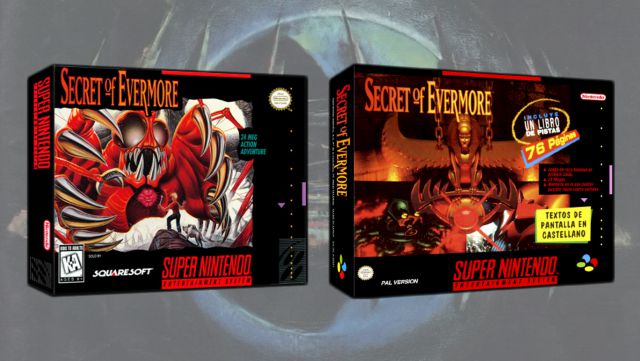
From Final Fantasy to Secret of Mana
When talking about role and Square, it can be abused by turning to Final Fantasy, but in the case of Evermore it provides a necessary context because its story connects with the Hironobu Sakaguchi saga more than through genre or company. As we discussed weeks ago when discussing the talent involved in the future installment, in addition to Sakaguchi, the legendary role-playing saga was born and grew thanks to other creatives such as Koichi Ishii, designer responsible for such emblematic creatures as chocobos and moguris. Ishii was featured in the NES trilogy, but in between he also directed a spin-off for the Game Boy. Known as Seiken Densetsu: Final Fantasy Gaiden in Japan, and simply Mystic Quest in Europe, the game changed turns for real-time combat like that of Zelda, another emerging saga of great popularity.
The spin-off itself was also successful on its own, so when it was time to make a sequel, Ishii’s team was able to put the Final Fantasy name aside and use the power of Super Nintendo to not just create graphics. and a next-generation combat, but also implement multiplayer. Despite the cuts that required the ill-fated agreement between Nintendo and Sony to create a CD player for SNES – Square’s intention was to accompany the peripheral at its launch – the resulting Seiken Densentsu 2 (Secret of Mana in the West) managed to rise. as one of the essentials of the console, and also one of the most loved and remembered JRPGs of both that time and later.
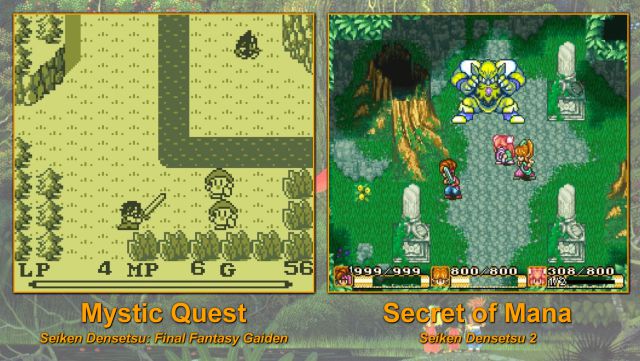
From Secret of Mana to Secret of Evermore
Giving the green light to Seiken Densentsu 3 was, therefore, a decision that was made almost alone, although its development did not have the expected fluidity due to difficulties in the studio to find the right direction and Square’s need to carry out more advanced projects. or priority. The company had successfully diversified and had several names of weight beyond Final Fantasy, but now they required manpower to get ahead (as was the case with Romancing SaGa 3 or the already in full gestation Chrono Trigger). In those they were when, in 1993-1994 they saw on the other side of the pond a new opportunity to swell the list and appeal to an American market that Secret of Mana had not worked as well as in Japan.
Founded in the late 1980s to carry out localization and distribution work, the US division was first tasked with developing a game on its own. For this purpose, a new team was formed – its creation was not an impediment to locate other titles as certain theories assumed -, recruiting about twenty people among whom were first-timers like Jeremy Soule, a musician who would end up composing for a multitude of role-playing blockbusters, or Daniel Dociu, a conceptual artist later involved in names such as Guild Wars or Half-Life 2. All of them accepted the challenge of making “an American Secret of Mana”, a game that would fit their combat in real time into a different world. influenced by Western culture and sensibilities, particularly those based on B-movies and cartoons.

Evermore: Cocktail of times and tones
The game would change a lot on the way to completion, but the main idea was there from the beginning and was about the ability of magicians to create worlds from their imagination. Worlds that would later be corrupted from the inside by one of its visitors and which the player would also have to enter to defeat. If you have played Secret of Evermore, you will know the initial premise is somewhat different, since wizards were replaced by ordinary people (a scientist, an archaeologist, a librarian and the granddaughter of the mentioned scientist) who created and were trapped in these worlds by accident —or, rather, by intervention of the antagonist— through a machine.
Unlike games like Chrono Trigger, Secret of Evermore did not actually involve time travel, but into a parallel dimension where each region was built based on the main tastes and interests of its creators. Thus Elizabeth, the granddaughter in love with prehistory, gave rise to a world inhabited by troglodytes and dinosaurs; Horacio, the archaeologist, to an ancient world influenced by classical civilizations like Egypt and Greece; Camelia, the librarian, to a medieval fantasy world; and Professor Sidney, inventor of the machine in question, to a futuristic world dominated by technology.

This variety of worlds resulted in enemies, weapons and even monetary systems typical of each region, through which the protagonist progressed together with a pet dog that was also mutated by the effects of the machine: from wolf dog to robot dog, to greyhound. and Poodle, discovering these transformations was part of the appeal of a plot that didn’t take itself too seriously, often taking on a humor more akin to Nintendo’s EarthBound than Squaresoft’s own games. Although that did not deprive him of effective moments of immersion and solemnity: Jeremy Soule opted for a soundtrack that often accompanied exploration and combat with subdued atmospheric melodies, or dominated by ambient sounds; and the visual direction, while rich in detail, rarely used such vibrant colors as Secret of Mana.
What’s more: like the regions born from the minds of the characters, Secret of Evermore also conjugated different tones, as if the members of the study gave free rein to their more specific sensibilities. The protagonist, even without a predetermined name, spoke up and cited his favorite films, the secondary repertoire did not skimp on jokes, there was room for winks to other sagas and the breaking of the fourth wall was frequent. But between the comedy and the moments of levity, Evermore also took us through quagmire without background music, mausoleums with human remains, and sinister forests deprived of sunlight. Not to mention some genuinely gruesome creatures by SNES standards. One of his main narrative devices was to confront evil versions of the creators of each zone, a duality that was also perceptible in other facets of environmental and sound design.
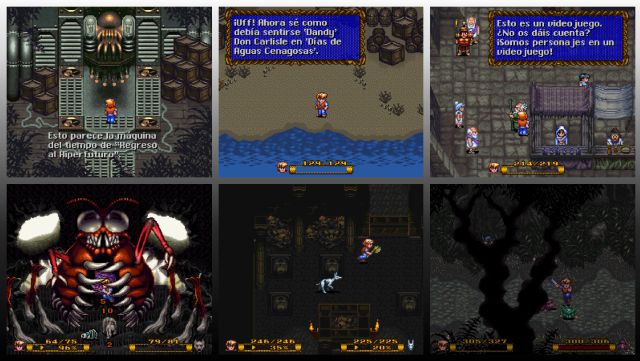
The Alchemy of Combat: A Little Old, A Little New
Considering the status of a fledgling team, and the fact that Square did not give them the Secret of Mana tools – they had to build their own recreation – the result is surprising and remains the same two and a half decades later. It ended, however, with an inevitable trial and error process and the studio chose not to implement multiplayer to avoid further complications. Although to preserve the cooperative element, the dog that accompanied the protagonist during most of the adventure – there were sections where they separated to add variety to the development – also attacked, had its own attributes, equipment, a material tracking ability and we could even take its control by pressing the Select button, something sometimes necessary to solve puzzles in the scenarios.
Both the cannon and its owner inherited from Mana a bar that recharged after each attack and only allowed substantial damage to be inflicted upon returning to 100%, thus preserving a rhythm more similar to turns than to pure action games. The boy also had at his disposal the full menu of Mana rings to move between various interfaces with weapons, items, spells and other commands with the time stopped. The magic in particular was somewhat more reimagined, since it was not conditioned by its own bar, but by the collection and use of materials – found by the dog on the ground, in other parts of the stage or buying from merchants – required to launch each concrete spell. A system called alchemy that allowed to attack, heal and even solve some situation outside of combat in a similar way to the Psynergies of the later Golden Sun.
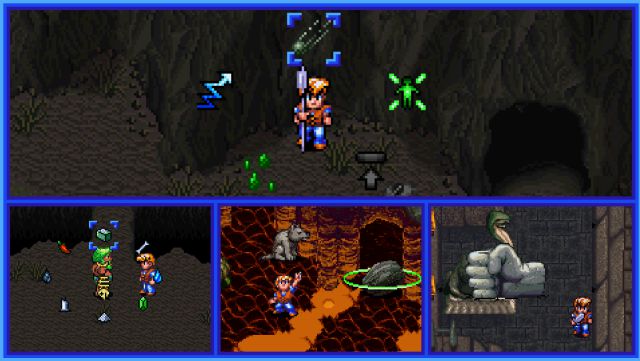
It was both one of its greatest contributions and main sources of conflict, since the system encouraged exploration to find ingredients and new formulas – several of the most powerful were optional – but the dependence on specific materials to use and improve spells entangled the process. As a consequence, it could end up dissuading its use – or limiting it to a small and convenient number – to focus on melee weapons, which also leveled up and unlocked deployable techniques by charging the force bar beyond 100%, though they offered less variety and required a higher amount of enemy kills than in Secret of Mana. The result? An efficient combat, but more laborious and less refined than that of its pseudo predecessor.
The gray sheep
In the long run, these inconveniences, the labyrinthine design of many settings, the absence of an epic narrative thread, and the more sober tone of graphics and music prevented him from rubbing shoulders with Secret of Mana or other big names in the genre. After just over two years of development, the game was released on October 1, 1995 in America, just two days after Seiken Densetsu 3 in Japan. Since neither of them would end up in the other territory (at least until 2019, when Seiken Densetsu 3 arrived as part of Collection of Mana), over time the idea that Square had considered Evermore as a replacement proliferated, something that damaged its reputation, although the initial reception was remarkable and its sales were more affected by stiff competition (it was surrounded by games like Yoshi’s Island, Mega Man 7 or Mortal Kombat 3) than by its own shortcomings.
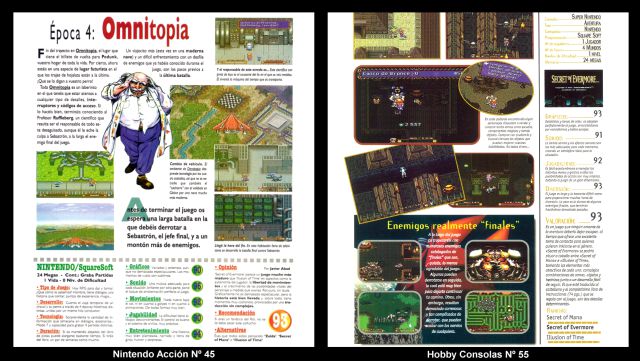
In Spain, resuming the beginning of the text, it was postponed until 1996, where it had a less saturated release window and was even more acclaimed thanks to the added value of the trackbook – not included in America – and a translation that was still far from being the standard. As you can see on these lines, it reached outstanding marks in the magazines of the time, and was also well valued by users (in the Hobby Consolas voting for best games of 1996 it was in third place on Super Nintendo, only below from Street Fighter Alpha 2 and Donkey Kong Country 3), although history repeated itself and ended up being considered by some as one of the factors for not locating the most anticipated Chrono Trigger.
With the change of generation, Square’s machinery did not stop. Quite the contrary, he found in Final Fantasy VII the great turning point that would invite him to bring many more games and even locate them on his own, without the intervention of a Nintendo with which he broke relations for many years. But in the meantime, the Evermore studio was disbanded and the game received no sequels, no ports to other platforms, and no digital re-releases when modern consoles gave way. Let’s not say a remake like Seiken Densetsu 3 (now Trials of Mana). It is an ostracized piece of history, and its greatest sin is not being as good as several of the best exponents of its genre.
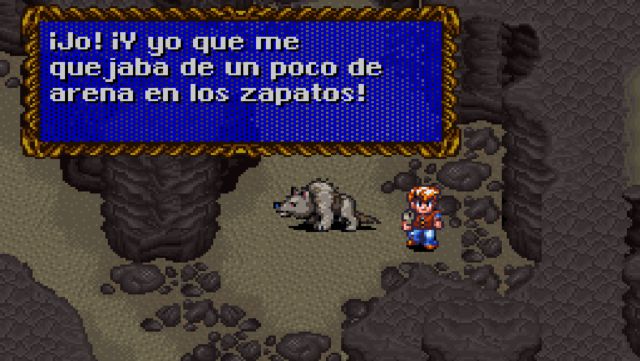
It definitely had its rough edges and its frustrations, so the point here isn’t to vindicate it as a misunderstood masterpiece either. But the differences in tone and sensitivity brought about by its western perspective, the extravagant secondary and creatures that populate its worlds, the careful setting, the dog that mutates through the ages or the myriad situations that are still original today – such as bartering Trying the clock at a market or helping the dog himself flee from a castle kitchen after pretending to be a pig to win a race – make Secret of Evermore a unique (J) RPG that does not deserve to be forgotten.

